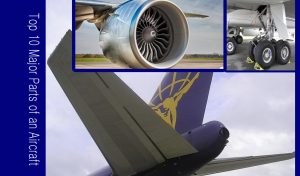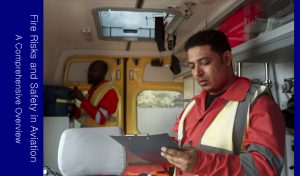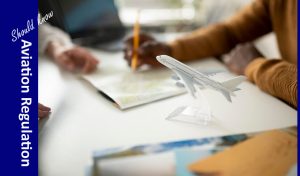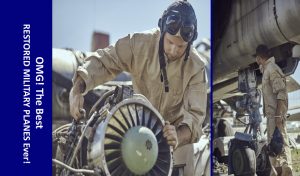Enhance Safety, Efficiency, and Confidence with Comprehensive Pre-Flight Preparation. Flying an aircraft is an awe-inspiring responsibility, one that places the safety of passengers and crew in your hands. To ensure every flight is safe and successful, rigorous pre-flight preparation is essential. In this comprehensive guide, we’ll walk you through the crucial aspects of mastering pre-flight preparation, providing practical knowledge, interactive activities, real-time examples, and answers to frequently asked questions. By the end of this guide, you’ll be well-equipped to handle pre-flight preparation with confidence.
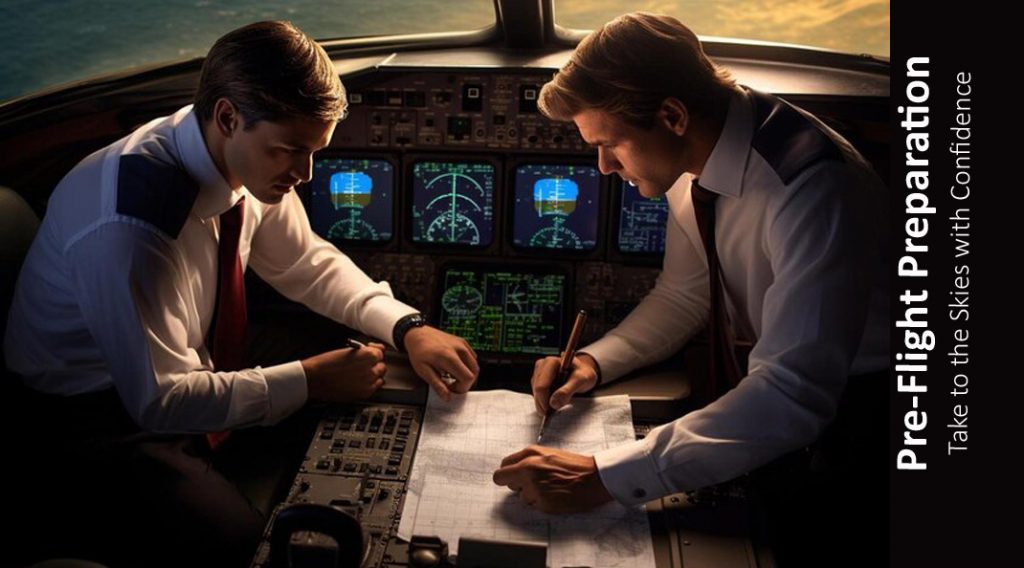
Understanding the Significance of Pre-Flight Preparation
Preflight preparation is the process of checking and preparing an aircraft for flight. It is a critical safety procedure that helps to identify and correct any potential problems before the aircraft takes off. Preflight preparation is typically performed by the pilot, but it may also involve other personnel, such as aircraft technicians and flight dispatchers.
There are many benefits to conducting a thorough preflight inspection. These include:
- Reduced risk of accidents: Preflight preparation can help to identify and correct potential problems with the aircraft, such as mechanical failures, fuel leaks, and damage to the airframe. By addressing these problems before takeoff, pilots can significantly reduce the risk of an accident.
- Increased safety: Preflight preparation helps to ensure that the aircraft is in a safe condition to fly. This includes checking the aircraft’s systems and equipment, as well as making sure that the aircraft is properly loaded and balanced.
- Improved performance: Preflight preparation can help to improve the performance of the aircraft. This is because a well-maintained aircraft is more likely to operate efficiently and reliably.
- Reduced costs: Preflight preparation can help to reduce the costs associated with aircraft operation. This is because by identifying and correcting potential problems early on, pilots can avoid more costly repairs and downtime.
The specific steps involved in preflight preparation vary depending on the type of aircraft and the operating environment. However, there are some general steps that should be followed by all pilots. These include:
- Reviewing the weather forecast: Pilots should review the weather forecast for the planned route of flight. This will help them to identify any potential hazards, such as thunderstorms, icing, and turbulence.
- Inspecting the exterior of the aircraft: Pilots should inspect the exterior of the aircraft for any signs of damage, such as dents, cracks, and corrosion. They should also check the tires, landing gear, and other components.
- Inspecting the interior of the aircraft: Pilots should inspect the interior of the aircraft for any signs of damage or problems. They should also check the flight controls, avionics, and other systems.
- Loading and balancing the aircraft: Pilots must load and balance the aircraft properly in order to ensure safe flight. This involves calculating the weight and distribution of the passengers, cargo, and fuel.
- Performing a systems check: Pilots should perform a systems check to make sure that all of the aircraft’s systems are operating properly. This includes checking the engine, electrical system, hydraulic system, and navigation equipment.
Once the preflight inspection is complete, the pilot can then file a flight plan and depart. By following proper preflight procedures, pilots can help to ensure the safety and success of their flights.
The Pre-Flight Checklist: Your Trusted Companion
The pre-flight checklist is a pilot’s trusted companion. It is a list of all the items that need to be checked and inspected before an aircraft takes off. The checklist helps to ensure that the aircraft is in a safe condition to fly and that all of its systems and equipment are operating properly.
There are many different pre-flight checklists, but they all typically cover the following areas:
- Exterior inspection: This includes checking the aircraft for any signs of damage, such as dents, cracks, and corrosion. Pilots should also check the tires, landing gear, and other components.
- Interior inspection: This includes checking the flight controls, avionics, and other systems. Pilots should also check the emergency equipment, such as life jackets and fire extinguishers.
- Systems check: This includes checking the engine, electrical system, hydraulic system, and navigation equipment. Pilots should also check the fuel and oil levels.
- Loading and balance: Pilots must load and balance the aircraft properly in order to ensure safe flight. This involves calculating the weight and distribution of the passengers, cargo, and fuel.
Pilots should use the pre-flight checklist every time they fly, regardless of the type of aircraft or the length of the flight. The checklist is a valuable tool that can help to prevent accidents and ensure the safety of the passengers and crew.
Here are some tips for using the pre-flight checklist effectively:
- Be thorough: Don’t rush through the checklist. Make sure to check each item carefully and completely.
- Be systematic: Start at the beginning of the checklist and work your way through it methodically. This will help to ensure that you don’t miss anything.
- Be prepared to correct problems: If you find a problem during the pre-flight inspection, don’t try to fly the aircraft. Get the problem fixed before taking off.
- Use a checklist that is specific to the aircraft you are flying: Different aircraft have different systems and equipment, so it is important to use a checklist that is specific to the aircraft you are flying.
The pre-flight checklist is an essential tool for pilots. By using it effectively, pilots can help to ensure the safety of their flights.
Weather Briefing: Navigating the Skies
A weather briefing is a vital part of any pre-flight preparation. It provides pilots with the information they need to make informed decisions about their flight, such as the best route to take, what altitudes to fly at, and what to expect in terms of weather conditions.
There are two main types of weather briefings: standard and abbreviated. A standard briefing provides a comprehensive overview of the weather conditions along the planned route of flight. This includes information on surface winds, temperatures, clouds, precipitation, and visibility. It also includes information on upper-air conditions, such as winds, temperatures, and jet streams.
An abbreviated briefing is a shorter version of the standard briefing that focuses on the most important weather information for the flight. This is a good option for pilots who are flying in familiar airspace or when the weather conditions are good.
Pilots can obtain weather briefings from a variety of sources, including:
- Flight Service Stations (FSSs): FSSs are operated by the FAA and provide pilots with flight planning and weather briefing services. Pilots can contact FSSs by phone, radio, or in person.
- DUAT (Direct User Access Terminal): DUAT is a web-based service that provides pilots with access to a variety of aviation weather products, including weather briefings.
- Automated Weather Observing Systems (AWOSs): AWOSs are automated weather stations that provide pilots with real-time weather information. Pilots can access AWOS data through DUAT or other online sources.
When requesting a weather briefing, pilots should be prepared to provide the following information:
- Aircraft type and identification number
- Departure airport and arrival airport
- Planned route of flight
- Departure time and estimated time of arrival
The briefer will then provide the pilot with information on the following:
- Surface weather conditions
- Upper-air conditions
- Significant weather forecasts
- Notices to Airmen (NOTAMs)
Pilots should also ask the briefer any questions they have about the weather conditions or their flight plan.
Here are some tips for using weather briefing information effectively:
- Be aware of the limitations of weather forecasts: Weather forecasts are not always accurate, so it is important to be aware of the limitations. Pilots should always use their own judgment and make decisions based on the best information available.
- Monitor the weather conditions en route: Weather conditions can change quickly, so it is important to monitor the weather conditions en route and be prepared to make changes to your flight plan as needed.
- Use multiple sources of weather information: Don’t rely on a single source of weather information. Instead, use multiple sources to get a complete picture of the weather conditions.
Weather briefings are an essential tool for pilots. By using weather briefing information effectively, pilots can help to ensure the safety of their flights.
Aircraft Inspection: Eyes on Safety
Aircraft inspection is a critical safety process that helps to identify and correct any potential problems with an aircraft before it takes off. It is a complex task that requires a thorough knowledge of aircraft systems and components. Aircraft inspections are typically performed by certified aircraft maintenance technicians (AMTs), but pilots also play an important role in inspecting their aircraft before each flight.
There are two main types of aircraft inspections:
- Scheduled inspections: These inspections are performed at regular intervals, such as every 100 hours of flight time or every year. Scheduled inspections are more comprehensive and cover all of the aircraft’s systems and components.
- Unscheduled inspections: These inspections are performed as needed, such as after a maintenance event or after the aircraft has been damaged. Unscheduled inspections are typically less comprehensive than scheduled inspections and focus on the specific area of concern.
During an aircraft inspection, AMTs will typically perform the following tasks:
- Inspect the exterior of the aircraft: This includes checking the airframe, wings, and control surfaces for any signs of damage, such as dents, cracks, and corrosion.
- Inspect the interior of the aircraft: This includes checking the flight controls, avionics, and other systems. AMTs will also check the emergency equipment, such as life jackets and fire extinguishers.
- Inspect the engine: AMTs will check the engine for any signs of wear and tear. They will also check the oil and fuel levels.
- Inspect the landing gear: AMTs will check the landing gear for any signs of wear or damage. They will also check the tires and brakes.
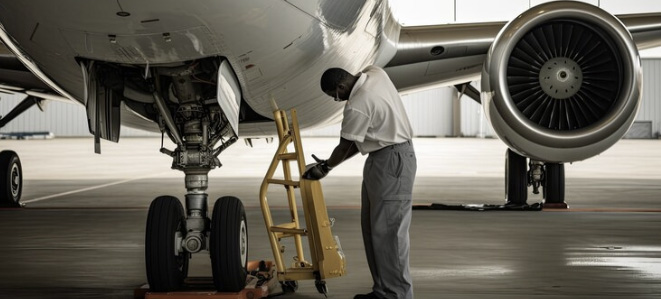
Pilots can also play an important role in aircraft inspection by performing a pre-flight inspection. A pre-flight inspection is a visual inspection of the aircraft that is performed before each flight. During a pre-flight inspection, pilots will typically check the following items:
- Exterior of the aircraft: Pilots will check the airframe, wings, and control surfaces for any signs of damage. They will also check the tires and landing gear.
- Interior of the aircraft: Pilots will check the flight controls, avionics, and other systems. They will also check the emergency equipment.
- Engine: Pilots will check the engine for any signs of leaks or damage. They will also check the oil and fuel levels.
By performing thorough aircraft inspections, AMTs and pilots can help to ensure the safety of aircraft and their passengers.
Additional tips for aircraft inspection
- Use a checklist to ensure that all items are inspected.
- Be thorough and don’t rush.
- Pay attention to detail.
- If you find any problems, don’t try to fly the aircraft. Get the problem fixed before taking off.
- If you have any questions or concerns, consult with an A&P mechanic.
Frequently Asked Questions (FAQs): Pilots’ Insights
- What if I encounter unexpected issues during the pre-flight inspection?
- Address them immediately, ensuring safety. Consult with maintenance personnel if necessary.
- Why is weight and balance so important?
- Incorrect weight and balance can lead to instability or loss of control, potentially fatal.
- What if the weather forecast changes mid-flight?
- Communicate with air traffic control for updated weather information and potential alternate routes.
- Why is it crucial to review emergency procedures regularly?
- In high-pressure situations, your training and preparedness can make the difference between a crisis and a safe outcome.
Conclusion: Take to the Skies with Confidence
In conclusion, thorough pre-flight preparation is the cornerstone of aviation safety and efficiency. By mastering these essential steps and engaging in interactive activities, you’ll elevate your skills as a pilot, ensuring the safety of your passengers and crew.
By embracing these best practices and always being prepared, you can take to the skies with the confidence of a seasoned aviator, knowing that you’ve done everything in your power to make each flight a success. Safe travels and blue skies ahead!
